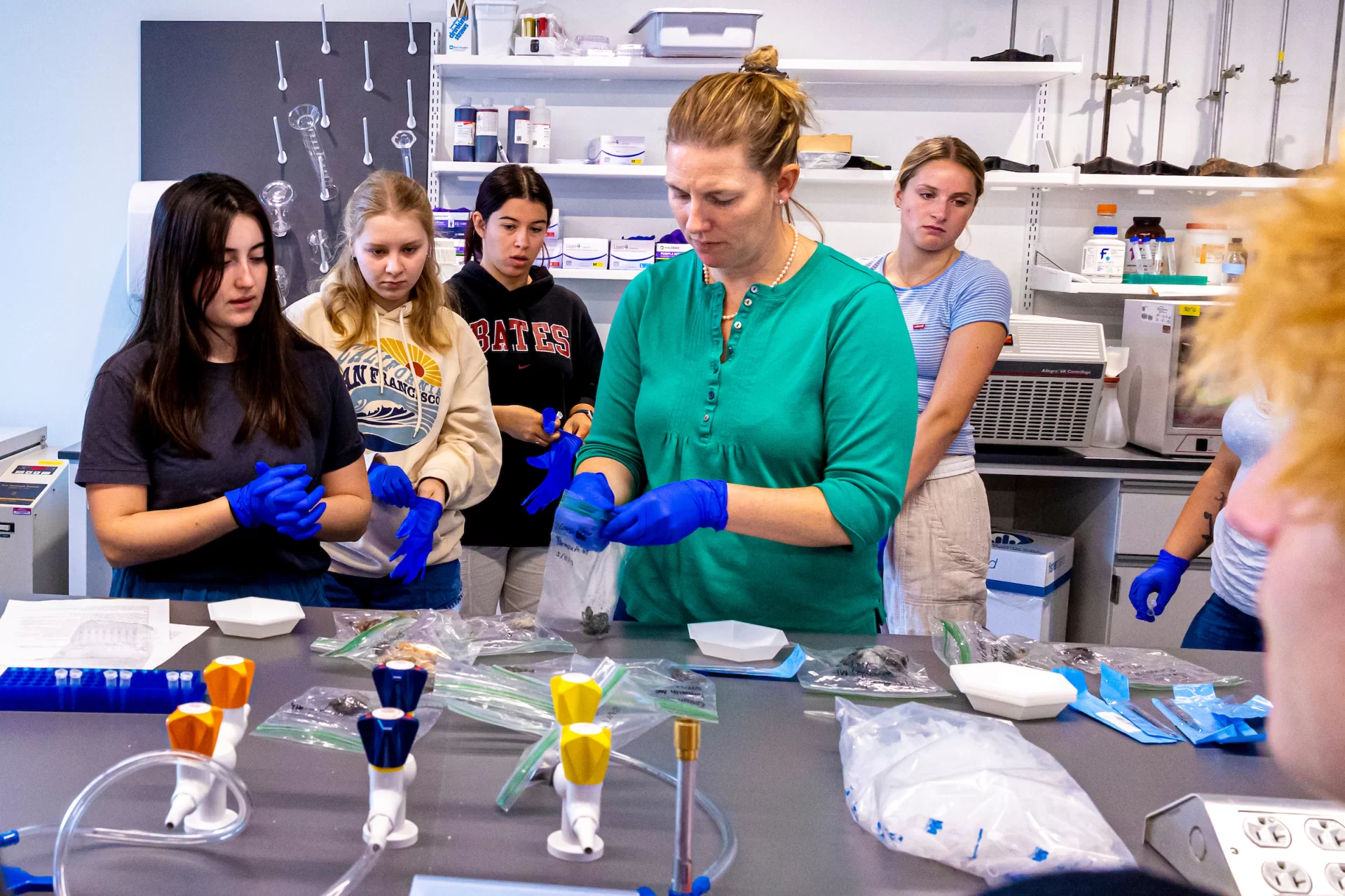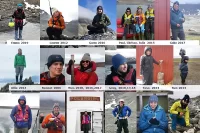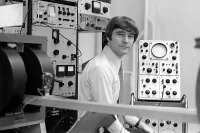
When Bates Associate Professor of Physics Aleksandar Diamond-Stanic arrived at Bates in 2016, the term “odd radio circle” — which refers to the massive rings that encircle entire galaxies — didn’t even exist, because astronomers hadn’t discovered them.
In 2019, using a powerful new telescope in Australia, scientists scanning the skies picked up something new: bizarre circles of radio emissions, which they dubbed “odd radio circles.” But they didn’t have a clue what caused them.
Now they do, thanks to a team of scientists, including Diamond-Stanic, who for the first time helped explain the puzzling phenomenon by finding evidence that suggests the odd radio circles were caused by ancient galactic winds.
Extensively covered in the media this week, the team’s findings were published on Monday in Nature and presented at the American Astronomical Society conference in New Orleans.
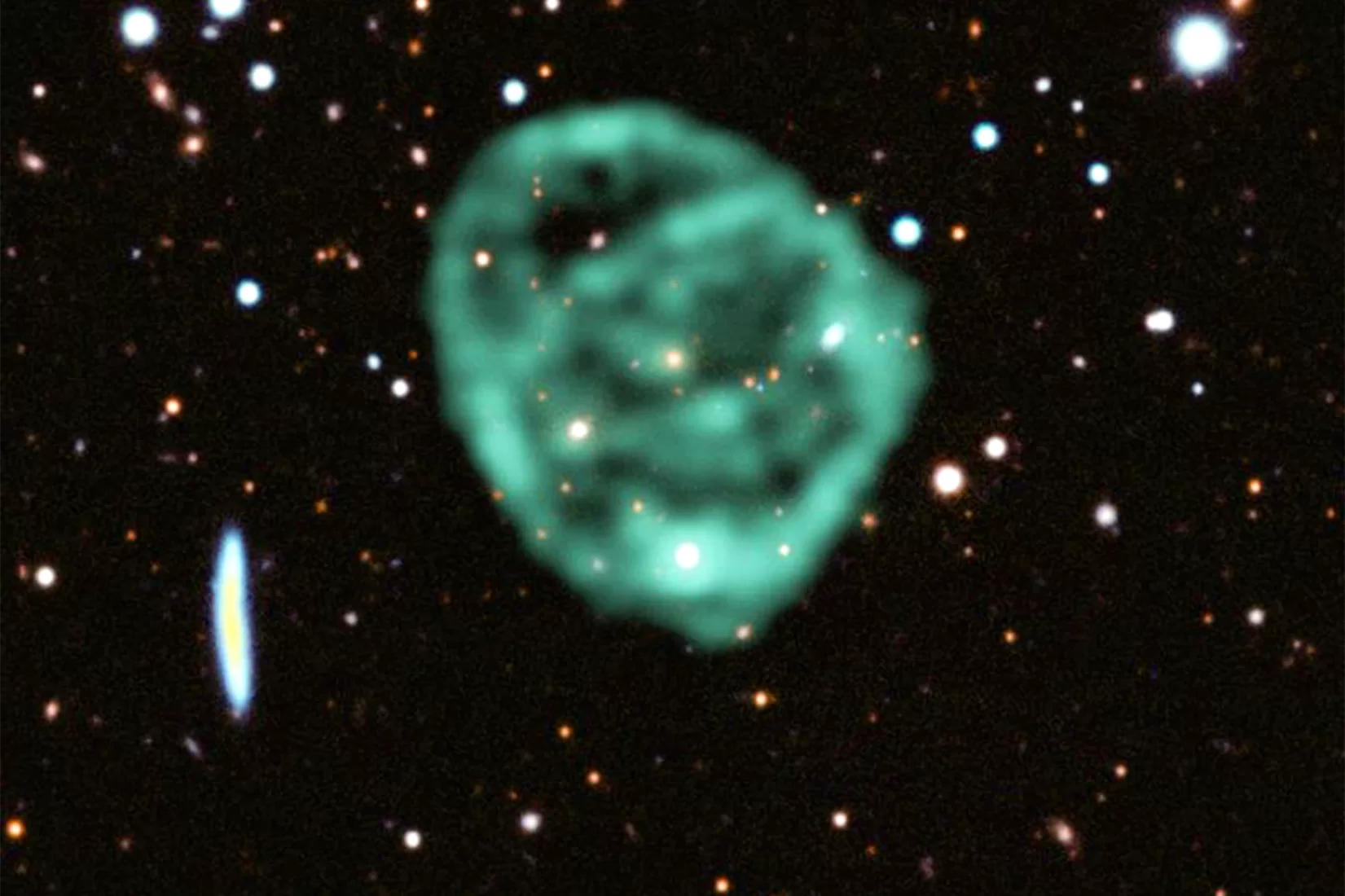
Being on the cutting edge of science is “something that doesn’t happen every day,” said Diamond-Stanic. “So that, in my mind, was one of the most significant aspects of this particular work: Taking something that no one even knew about a few years ago and actually being able to move that forward. It’s cool.”
The team of scientists, led by Alison Coil, the chair of the Department of Astronomy and Astrophysics at the University of California San Diego, used a two-pronged approach to uncover the source of the odd radio circles, also known as ORCs (no relation to Tolkien’s fictional monsters).
Diamond-Stanic is proud to be part of a team to “make an important contribution to understanding something we didn’t even really know about a few years ago.”
The first was observation. Using the W.M. Keck Observatory on Mauna Kea, Hawaii, the team, including Diamond-Stanic, looked at one specific odd radio circle, known as ORC 4, which is the only one that can be seen from the Northern Hemisphere. Then, they turned to other collaborators who ran simulations to help explain how the circles got there.
The approach — data collection coupled with simulations — helped the researchers home in on a possible answer: The radio rings are from outflowing galactic winds that howled for hundreds of millions of years before abruptly shutting off, creating a shock that left behind a radio ring.
Diamond-Stanic is proud of the groundbreaking collaborative work and “being part of a team that was able to collect a certain piece of data, connect with people who run computer simulations, and make an important contribution to scientific understanding.”
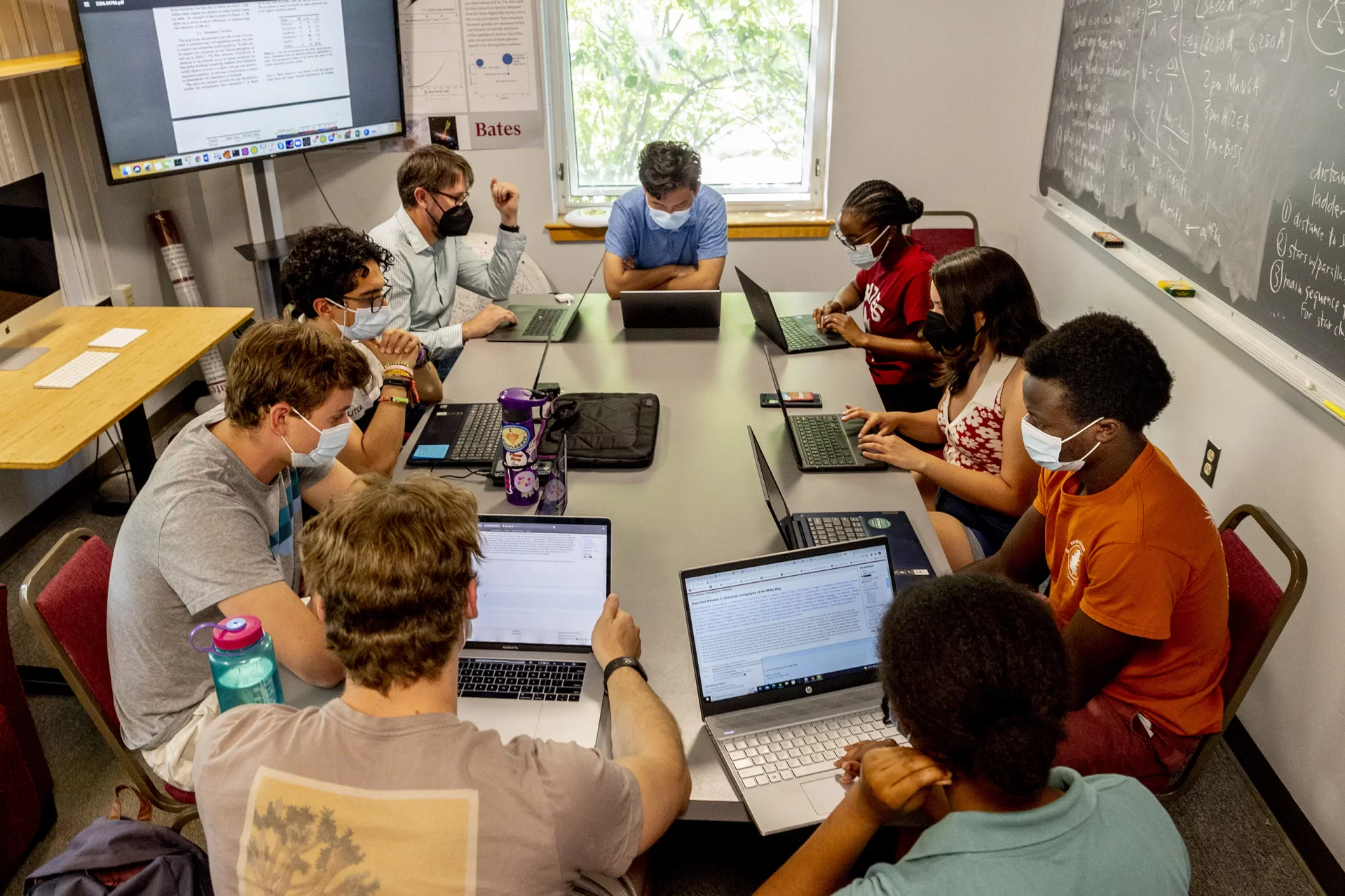
The team of astronomers that included Diamond-Stanic gathered the data in March 2022 when they had reserved time at the Keck Observatory to study starburst galaxies. Then, more or less on a whim, the team decided to look at the large rings of ORC 4 through the spectrograph to learn more about the optical emission lines produced by ORC 4, which is more than 10 times larger than the Milky Way. It was the first time that optical data had been gathered on ORCs, which previously were only viewed through radio emissions.
What they observed was an unusually high amount of compressed gas from an ancient starburst formation.
“It was a little bit of a serendipitous use, to point at this particular source of interest,” Diamond-Stanic said. “And in that hour we happened to see something that was surprising. It was kind of like, ‘Huh, that’s weird.’”
Their working hypothesis: The starburst galaxies that drove the odd radio circles had their peak activity further back in time, hundreds of millions of years ago, and the odd radio circle was a relic of that outflowing galactic wind.
When a large cluster of stars die and explode, they simultaneously force gas out of the galaxy, creating outflowing winds.
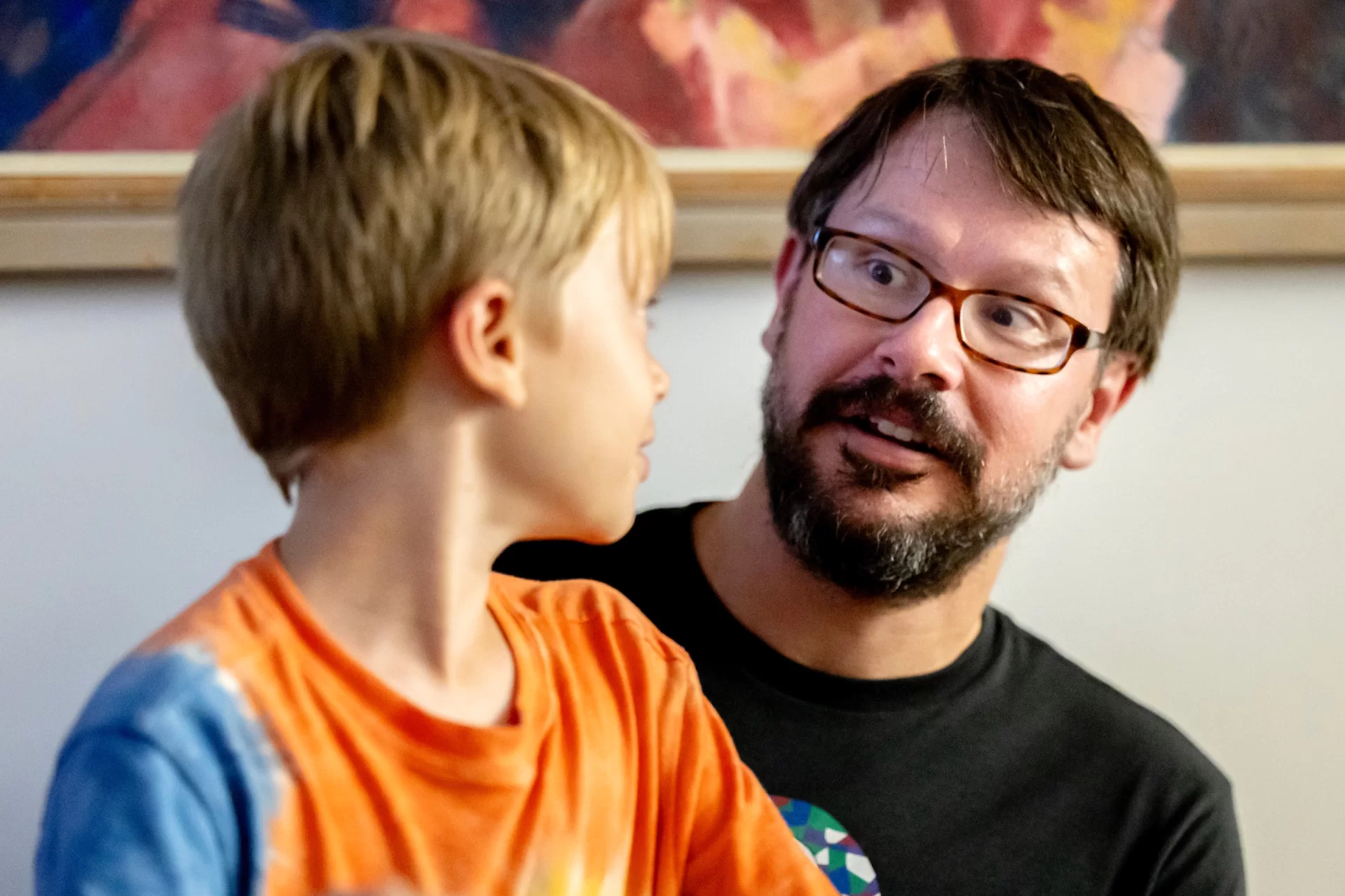
“Sure enough, there is this sort of surprisingly bright extended emission line from this feature of ionized oxygen. And so we see this particular feature extended around this particular galaxy,” Diamond-Stanic said.
The team of scientists shared their data with Coil’s UCSD-based team, and they connected with colleagues with expertise in running the simulations: Cassandra Lochhaas at the Space Telescope Science Institute in Baltimore and Drummond Fielding at the Center for Computational Astrophysics in New York City. What the simulations revealed was that the enormous odd rings were from massive outflowing galactic winds from exploding stars, estimated to be about a billion years old.
“We could actually see the outflowing gas extended to large scales around galaxies and then sort of connected to it,” Diamond-Stanic said. “We think this is a really important process that explains why galaxies are pretty inefficient at forming stars throughout the history of the universe.”
Even those who never look into the night sky and wonder about stars or galaxies may find the new research interesting, Diamond-Stanic said, because ORCs help to explain how the galaxy we live in came to be.
“Understanding our cosmic contexts is connected to how galaxies formed and have changed through cosmic time and what sort of phases they’ve gone through,” said Diamond-Stanic, who is on sabbatical this year, spending part of his time doing research at the Roux Institute at Northeastern University in Portland.
Another exciting element of the new finding for Diamond-Stanic is the role his students played in his study of galactic winds in these compact starburst galaxies. Often with student researchers, Diamond-Stanic’s lab at Bates uses datasets from telescopes on Earth and in space — such as the Hubble Space Telescope and James Webb Space Telescope — to study the interactions of gases within galaxies.
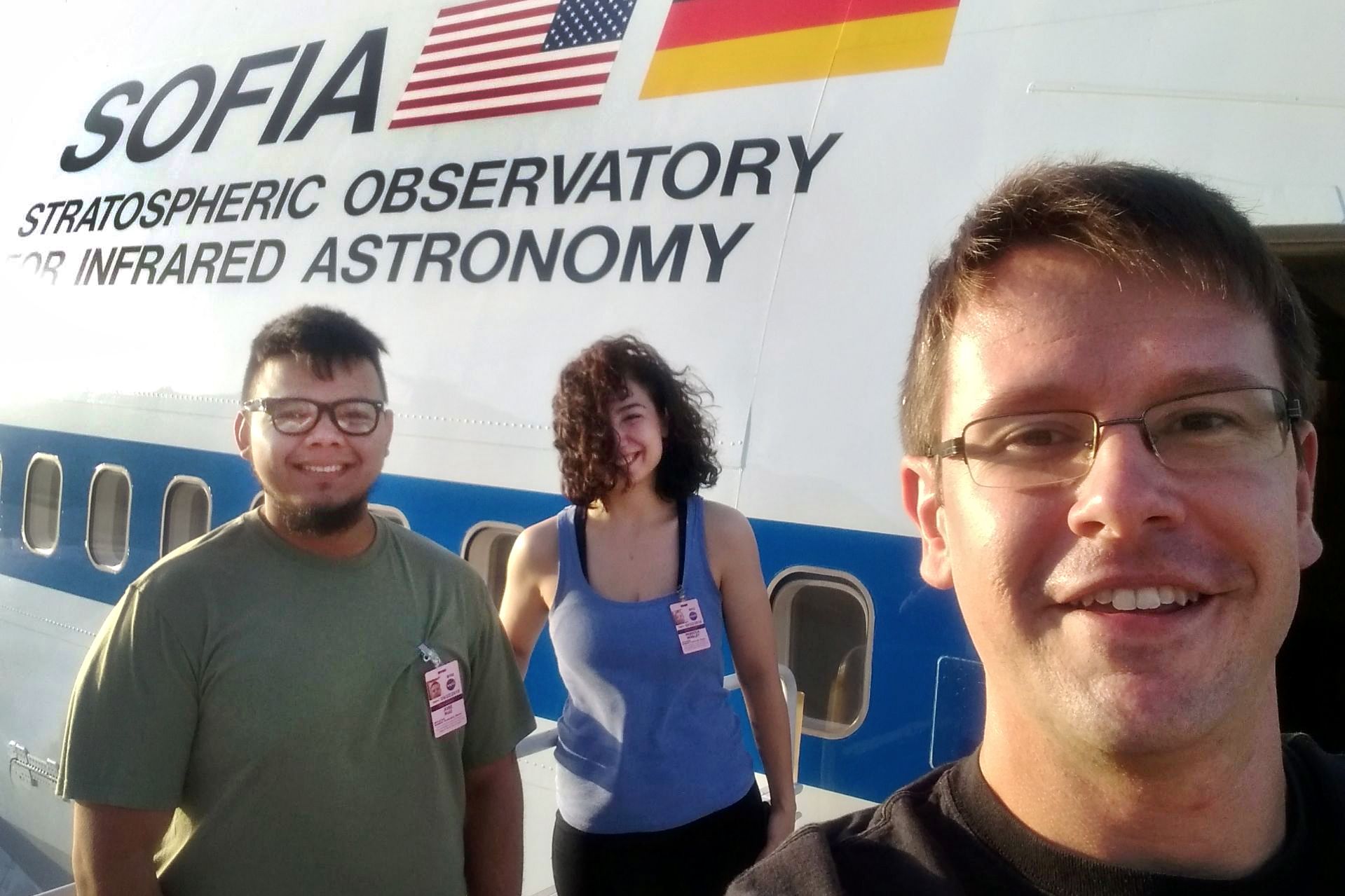
In 2021, one of Diamond-Stanic’s scholarly papers, cited in the landmark research published in Nature, included work that involved Bates students who gathered data from a telescope in New Mexico for their independent studies.
“Undergraduates at Bates are doing core work in advancing our understanding of what exactly this data is telling us,” Diamond-Stanic said. “(At Bates) we’ve been studying in some sense the exact same galaxies and sort of related galaxies with complementary data to try to learn new things about what’s going on — what the current rate of star formation is in those galaxies.”
This week, while Diamond-Stanic enjoyed the media buzz around the important finding — which included coverage by CNN, The Daily Mail, and NPR — he missed being able to share the news with his students in his classroom at Bates.
While being away from campus on a sabbatical is “a refreshing and rejuvenating opportunity to focus more on my research and scholarship this year, but in many ways my teaching and my work with students often provides a lot of the inspiration for the scholarship, and vice versa,” Diamond-Stanic said.
“Having that full connection, that’s something I’m looking forward to next year.”
His research on the 2021 paper was funded by three grants totaling more than $230,000, including one from the National Aeronautics and Space Administration’s Space Telescope Science Institute. Diamond-Stanic’s ongoing work with Bates students is currently funded by two other grants totaling $166,000. All told, 36 Bates students have conducted research with him.
.
